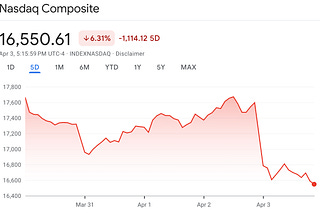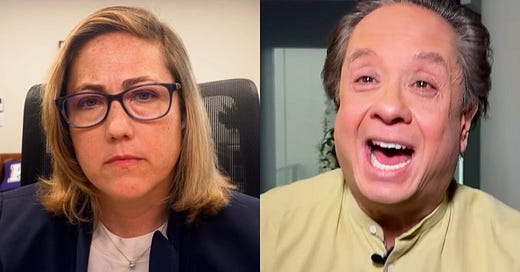
He’s a Key Thinker of the Radical Right, But Is He All That?
Where the rediscovery of Sam Francis goes wrong.
PUT IT THIS WAY: Samuel T. Francis has been thoroughly rediscovered.
Once upon a time, Sam Francis had been a leading voice of the hard right—what used to be called the “paleoconservatives.” By the time he died twenty years ago, he had slipped into relative obscurity. But now? Growing interest over the last decade, combined with the Trumpian shift in American politics, has brought this right-winger’s name back into the national political conversation.
The paleoconservatives were the embattled and often embittered second generation of traditionalists within the conservative intellectual movement. They emerged in the late 1970s and early ’80s as a conscious group in direct opposition to “neoconservatives.” (The term “paleoconservative,” in currency as early as 1980, obviously riffs on neocon.) The paleos resented the neos for several reasons. Intellectually, they did not consider the neocons, who were often Cold War liberals who moved to the right in the late 1960s or in the ’70s, to be truly conservative. The paleocons thought, rather, that the neocons were still liberals, just disgruntled ones, and that their basic assumptions remained left-wing, not right-wing. Second, the paleos resented the neocons’ capacity to dominate right-leaning venues and patronage networks. While the well-connected and well-credentialed neocons appeared to live large in multiple Washington think tanks, the paleos had a harder time funding their own think tank up in Illinois, or winning professorships or federal appointments.
In the public mind, the most salient fact about the paleoconservatives was that they were, on the whole, more drawn to racialist thinking than were mainstream conservatives. For several paleocons, this became a decisive factor in their careers. That was certainly the case for Francis. For all his trenchant writing—the American Society of Newspaper Editors twice, in 1989 and 1990, gave him an award for his Washington Times editorial writing—his increasingly open racism led to a slow-motion expulsion from the conservative mainline. In 1995, the Times cashiered Francis for saying whites ought to “reassert our identity and our solidarity, and we must do so in explicitly racial terms through the articulation of a racial consciousness as whites” at a conference hosted by white supremacist magazine American Renaissance.1
Francis denied being a white nationalist. In the immediate aftermath he said, “I believe there are racial differences, there are natural differences between the races. I don’t believe that one race is better than another. There’s reasonably solid evidence for IQ differences, personality and behavior differences. I understand those things have been taken to justify segregation and white supremacy. That is not my intent.”
But his later efforts directly involved raising the political consciousness of whites as a bloc. He argued this was because a consciously white political movement was the only realistic basis for his preferred political outcomes, since, he thought, nonwhites in America were essentially clients of a liberal elite. He continued to make this case at racist venues like American Renaissance where he was celebrated as a victim of liberal censorship. Even if we take at face value Francis’s denials of being a white nationalist himself—and I don’t think we have to—he was objectively pro–white nationalist. By the time he died on February 15, 2005 at the age of 57, Francis was cofounding the white supremacist National Policy Institute.
Since 2016, however, a cottage industry has been busily recovering Francis’s thinking. From the center right, Matthew Rose in First Things; from the left, Peter Kolozi and John Ganz; from the center, Damon Linker. Youthful hard rightists plumb Francis for insight. (Michael Brendan Dougherty, now of National Review, beat everyone to the punch by highlighting Francis in 2007.)
As Alec Dent showed in a 2022 Vanity Fair article, a gaggle of hard rightists have quietly worked to uncancel Francis, both to draw on his ideas and to signal their contempt for the mainstream press and the once-mainstream conservative movement.
At his height, Francis’s allies were impressed by him. The “paleolibertarian” Murray Rothbard wrote of him in 1994 that “Sam Francis is our Pareto, our Gramsci, and we must not allow him to be suppressed,” breathlessly adding: “Francis can be the Tom Paine, the Patrick Henry of the next American Revolution that will at last redeem the glorious promise of the first.” Paleocon Paul Gottfried called Francis the “contemporary on the American Right who shaped my thinking most decisively.” The magazine Chronicles, where Francis was contributing editor, said that in his anthology, Beautiful Losers, he staked “his claim as one of the most important conservative thinkers of our time.”
The paleoconservatives’ great political hope, Pat Buchanan, also respected Francis as a thinker. According to his biographer, Buchanan met Francis with another paleocon writer, Joe Sobran, in the early 1990s.2 This meeting began a decade of monthly dinners between the three men: a defining intellectual friendship. Francis and other paleos willed Buchanan to be their battering ram against liberal institutions, especially in his primary campaign against President George H.W. Bush. Buchanan’s biographer calls Francis a “true believer” in Buchanan, whose “zeal infected Pat” as much as his thinking informed him. Witnesses to a meeting in which Francis described Buchanan’s transformation of the political scene came to believe “Buchanan was in love with Francis’s mind, that he truly believed that the two men could remake the world.”
It wasn’t to be, and with exile following the American Renaissance scandal came obscurity for Francis. Unless you are particularly sympathetic to the paleoconservative narrative of expulsion (especially at the hands of neoconservatives), Francis does not cut a romantic figure. Gruff, combative, and overweight, charm does not emanate from him or his writing to win modern readers. When he died, whatever moment Francis had once had was long past.
Until Trump.
Really, it’s the sense of prescience that has remade Francis.
The reevaluation of Francis makes me uncomfortable, and not necessarily only for the obvious political reasons. Part of my discomfort is uncertainty about how original a thinker Francis was exactly—and a sense that granting Francis too much acclaim is to bestow upon him and his ideas more credit than they deserve. When does a shocked rediscovery become celebration?
THE CHIEF CAUSE of Francis’s rediscovery is that his writing appears to have anticipated in startling detail Donald Trump and Trumpism. I vividly remember reading in the autumn of 2016 his 1981 essay, “Message from MARs: The Social Politics of the New Right” and thinking, “My God, this anticipated all of it.” I was obviously not alone.
What seems to set Francis apart from the earlier generation of conservative intellectuals was his materialism—grounding politics in the hard structures of politics—and his related belief that ideas and rhetoric are not enough. Power matters. In “Message from MARs,” Francis’s central move was to find a sociopolitical base for the emergent “New Right,” an activist-oriented right-wing movement organized around social issues. The New Rightists were often the younger or second-generation members of the conservative intellectual movement who, based in Washington, D.C. or its Virginia suburbs, aimed to turn their ideas into real political action, usually funded by small donors reached by direct-mail appeals.
Aggrieved or worried middle Americans were the financial drivers of the New Right, and Francis saw in them a greater possibility. In his hands, they became “Middle American Radicals” (MARs): high-school educated, white ethnic (or Baptist and Mormon), “skilled and semi-skilled blue-collar workers” aged in their thirties through sixties, who wanted change. Their defining feature was the attitude that, politically speaking, “The rich give in to the demands of the poor, and the middle income people have to pay the bill.” The MARs are the angry middle class, resentful of the poor, envious of the rich, and after theirs.
Francis saw opportunity in the MARs. If the New Right harnessed their power, it could effect a revolution in the ruling elite, replacing the left-liberal rulers and their administrative arm with a right-wing elite that would dismantle the “managerial power structure.”
Francis’s most unique contribution was probably to think transgressively—from a conservative perspective—about how to achieve New Right goals. With the backing of the MARs, the New Right, Francis argued, should “find a radical, anti-establishment approach better adapted to the achievement of its goals.” It could be more protectionist, and use the state to benefit the interests of the MARs directly. It would be staunchly nationalist in foreign policy. It would make greater use of the presidency than conservative theory traditionally allowed:
only the Presidency—as Nixon and Agnew showed—has the viability and resources to cut through the intractable establishment of bureaucracy and media to reach the MAR social base directly. Only the Presidency is capable of dismantling or restructuring the bureaucratic managerial apparatus that now strangles the latent dynamism of the MAR-Sunbelt social forces.
There’s so much of Trump here: an appeal to resentment of the “cosmopolitan” elite; the shedding on conservative dogma for right-wing populism; intent to use the state to punish and reward; a drain-the-swamp ethos; unapologetic nationalism.
IN RETROSPECT, ONE QUIRK is how conventional Francis was on foreign policy. When he wrote “Message from MARs” in 1981, he was a more conventional anti-Communist hawk. By the time the essay was anthologized in post-Cold War 1993, he had moved toward isolationism, and closer to modern Trumpism.
In the 1991 essay “Beautiful Losers,” Francis refined his MARs analysis. He specifically recommended appeals to the “salient concerns of postbourgeois Middle Americans,” namely: “crime, educational collapse, the erosion of their economic status, and the calculated subversion of their social, cultural, and national identity by forces that serve the interests of the elite above them and the underclass below them, but at the expense of the middle class.” Add the word “gender” there and it’s hard to come up with a better succinct summation of the contemporary right’s 2024 electoral campaign.
When Francis wrote “Message from MARs” he was 34 years old, working as a national-security aide to Sen. John East (R-N.C.), a tragic conservative true believer. Previously, Francis had earned a Ph.D. in British history at the University of North Carolina at Chapel Hill. There he had been a part of the Carolina Conservative Society, alongside a number subsequently important paleoconservatives (jokingly self-dubbed the “Tar Heel Conspiracy”), where they read classic conservative literature. Francis was most taken with the older conservative intellectual James Burnham. At the same time he was writing “Message from MARs,” Francis was completing a short monograph on Burnham’s thought, which permeates “Message” and much of Francis’s work. It is perfectly reasonable to call Francis a Burnhamite.
Rereading Francis in light of Burnham, the paleoconservatives, and the wider New Right milieu causes some of his luster to wear off—for it turns out that many of Francis’s preoccupations that seem so impressive for their proto-Trumpism were widely shared across the New Right. For instance, his focus on the Middle American Radicals, for which he became well known, is largely a reformulation of the standard New Right talking point of the emergence of a new majority of Southern, Midwestern, and Northeastern whites and some 85 percent of Republican voters—the case for which had been made by in books by New Rightists Kevin Phillips in 1969 and William Rusher in 1975, and in innumerable articles by cobelligerents, including those in The New Right Papers, a 1982 anthology edited by Robert W. Whitaker in which “Message from MARs” was first published. The arrival of this new majority, which had been both fostered and delayed by the repeated presidential campaigns of segregationist George Wallace and finally propelled Nixon and then Reagan to the presidency, had been long expected, and it was taken to be an article of New Right faith.
Francis had keyed in on the MARs specifically as a unitary class—but even this wasn’t original to him: His essay built on the research of the academic sociologist Donald I. Warren, whose book The Radical Center: Middle Americans and the Politics of Alienation (1976) had identified and detailed the group, which, while important, was much smaller than Francis implied. In fact, the proposal for The New Right Papers put together by its editor Robert Whitaker in early 1979 indicates that Whitaker initially intended for Warren (“far from a regular rightist”) to write “A Message from MARs” himself. It may have been that Francis alerted Whitaker, who at the time was an aide to the archconservative Rep. John Ashbrook, to Warren. But it is more likely that Whitaker, who was a populist activist and political entrepreneur, had found the work useful and asked Francis to write the essay, which already had the title, when Warren either could not or would not do it. But whereas Donald Warren saw the Middle American Radicals largely as victims of cultural and economic change who became alienated and often bigoted, and wanted to reduce their sense of alienation, Sam Francis wanted to amplify and exploit it.
Francis’s emphasis on harnessing cultural grievances as a winning political strategy was also a core assumption of the New Right. As Whitaker wrote in his foreword, “The New Right seeks to give ‘social issues’ . . . more than lip service. Among the powers-that-be in Washington, only the New Right is capable of seeing busing and other social experiments as mere symptoms of a deeper malady, and being aware of the dangers that arise from treating only symptoms.” Social issues included opposing desegregation busing, opposing racial quotas, and limiting immigration. Another contributor to The New Right Papers, the institution builder Paul Weyrich, who cofounded the Heritage Foundation, saw the “value-orientation” of the New Right toward social issues as based in the “the blue-collar, middle class origins” of the movement. The entire New Right political project was organized around using controversial wedge issues to motivate blue-collar social conservatives to donate money and unite with conservative Republicans.
Likewise, Francis’s framing of liberal elites in control of bureaucracy and the media was not new, either. Media and bureaucrats had long been bugbears of conservative intellectuals. By the 1970s, some, like Jeffrey Hart and Kevin Phillips, were treating both as powerful constitutive parts of the American regime. In an article Francis cited in “Message from MARs,” Hart, a senior editor at National Review, specifically argued conservatives should overturn their orthodox view of the presidency and start seeing the executive as a tool to be harnessed to smash these dangerous pillars of liberal domination.3
In short, many of the elements that seem most prescient in Francis’s “Message from MARs” were commonplace New Right themes: The focus on blue-collar former Democrats; the combativeness and self-definition against the temporizing conservative movement (personified by William F. Buckley) for being too economically royalist and socially laissez-faire; the willingness to use the state to go after social conservatives’ enemies. Even the focus on power was widespread in the New Right circle. “To me—and I think most other New Right leaders would share this perception—politics is activity in relation to power,” wrote Weyrich as he explored the need—and the New Right’s actions—to shape the presidency at the level of staffers and permanent bureaucrats.
IN THE TRUMP ERA, Francis has been plucked from the New Right (and paleoconservative) world by people with an interest in ideas, who have treated him as the New Right’s most sophisticated spokesman. In doing so, the attention on Francis has made him appear to be the genius behind and progenitor of ideas that were in fact fairly widely shared from the mid-1970s until the mid-1990s.
To what extent does Francis deserve credit for originating and influencing either paleoconservative, New Right thought or today’s Trumpist right wing? I’d argue that there are really just two reasons Francis’s work has recently caught the attention of folks looking for figures of foresight.
First, Francis did do something novel in “Message from MARs”: He brought the Middle American Radicals into conversation with James Burnham’s theory of elites. Once a celebrated Marxian and post-Marxian thinker, Burnham turned rightward in the early 1950s and became an éminence grise at National Review. In The Managerial Revolution (1941), he outlined his view that modern politics is and will increasingly be based on the rule of a technocratic elite and an ideology that justifies their domination. In a follow-up, The Machiavellians (1943), Burnham explained in detail the dynamics of elite politics, as different classes and cliques attempt to cling to power or harness the people to oust their rivals.
Francis, who called The Managerial Revolution “the most accurate and comprehensive account of the New Class, its ideology, interests, and dynamics,”4 adapted Burnham’s concept of elites and of rival elites cycling in and out of power, and the use of political ideology to justify the dominance of particular sets of elites. Francis envisioned the fading of the liberal elite class and the possibility for a right-wing elite class to replace it on the backs of MAR votes. As Francis put it, the MARs are “a political class, and they aspire, through the New Right, to become the dominant political class in the United States by displacing the current elite, dismantling its apparatus of power, and discrediting its political ideology.”
According to Francis’s adaptation of Burnham, liberals dominate the key institutions of power and knowledge production, and they use their dominance to propagate the idea that liberal leadership is necessary to combat entrenched privilege and inequality—effectively uniting a cadre of elites with the (often racial minority) underclass against the squeezed (often white) middle. Each of these constituent ideas had existed separately on the right—and even in concert. Francis’s contribution was to put a fine, Burnhamite point on them all.
To read Burnham’s The Managerial Revolution today is to be impressed with some of his subtle analysis, but also amused at his shockingly wrong predictions, as no less a figure than George Orwell pointed out. Burnhamite structural analysis tends to universalize and prophesy as it identifies laws and patterns, and it does so with a confidence that is rarely warranted. It creates the perception of disinterested analysis, even when, like Burnham and Francis, its authors are far from disinterested. Francis’s use of Burnham’s thought gave the New Right a framework and vocabulary to explain their enmities in grand systemic terms, which can make it all seem much more profound than it really is. (The neoreactionary Curtis Yarvin, an influence on JD Vance and various Silicon Valley figures, is another Burnhamite who does the same.)
It is this pseudo-prophetic aspect of Burnhamite thinking that leaves anyone reading Sam Francis in the Trump era with an impression of profound foresight. But how much prescience can we grant to someone who, working very much within the accepted wisdom of his time and circle, predicted something that came to pass thirty-five years after he suggested it? In the mid-1990s, according to his friend Paul Gottfried, Francis himself “recognized that he was betting on a fading horse” in the MARs, who composed a “declining percentage of the work force in a postindustrial economy.” And so Francis focused more and more on explicitly racialist thinking and anti-immigration writing. “Trying to win non-whites, especially by abandoning issues important to white voters, is the road to political suicide,” Francis wrote after the 2000 election. This prescription, of course, runs totally counter to Trump’s much-vaunted success in bringing black and Hispanic voters into the GOP coalition.
THE SECOND REASON FRANCIS is remembered more nowadays than his New Right peers is a mundane one: He stuck around longer and focused on writing. After working as a Senate aide he became an editorial writer for the Washington Times and a columnist for Chronicles. He made writing his trade in a way that Weyrich (an organizational impresario), Whitaker (a would-be-populist organizational impresario), and other paleocons (often scholars) did not. An interesting counterpart might be the New Right’s demographer–prophet Kevin Phillips, whose sociological analysis seems just as prescient as Francis’s and was certainly much more influential. Perhaps Phillips, who died in 2023, will get his own reconsideration and his own elevation to the status of foreteller of Trumpism. Or perhaps his political apostasy will make him less alluring to those who excavate right-wing thought.
None of this is to say Francis was not a sophisticated thinker. He was. But placing him in context is a corrective to over-reading him, either from the left or right, as a theorist of genius. Whatever his talents, at least in regard to his foresight about the American political scene, Francis was a Burnhamite, a paleocon, and a New Rightist. In bringing these ways of thinking together, he made an interesting, although not necessarily groundbreaking contribution to right-wing thought, but also one fraught with racialist potential.
I suspect that alongside Francis’s supposed prescience, curiosity about him is linked to his tone. Francis was frequently bleak and eschewed most of the moralizing of the era. He didn’t think the early conservative intellectuals were really serious. Interest in such an amoral, seductively pessimistic writer says more about the nature of the right today—and our moment—than anything else. When we look back at Francis, we see what we want to see.
Funnily enough, it was Dinesh D’Souza who publicized Francis’s remarks in the Washington Post.
Sobran was fired from National Review for antisemitism in 1993, and denied a role at the American Conservative in 2001 for his refusal not to engage with the Holocaust-denying Institute for Historical Review. “We can’t let these people win,” Sobran reportedly said to the American Conservative’s managing editor—although it is unclear whether “these people” referred to neoconservatives, to those who tar their opponents as antisemites, or, simply, to Jews.
Jeffrey Hart made his own contribution to The New Right Papers in the form of a bizarre dialogue between a Young Man and an Intelligent Woman. Robert Whitaker originally wanted Hart to write a dissection of the verbalist class. Who knows why he phoned it in with his odd contribution?
Although almost amoral in its analysis and deeply cynical about the moral content of political ideologies, The Machiavellians reveals Burnham’s fairly ordinary bourgeois political preferences in his prescriptions for restraining and channeling elite competition in order to maintain “an advanced level of civilization” and personal liberty.

















